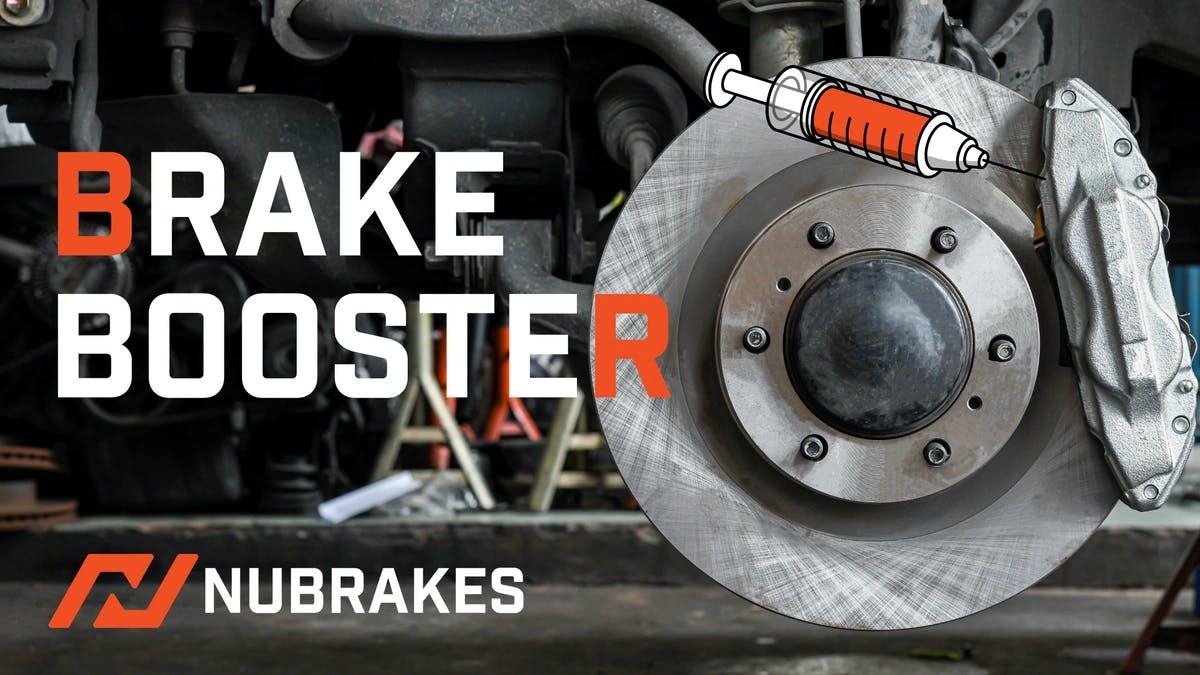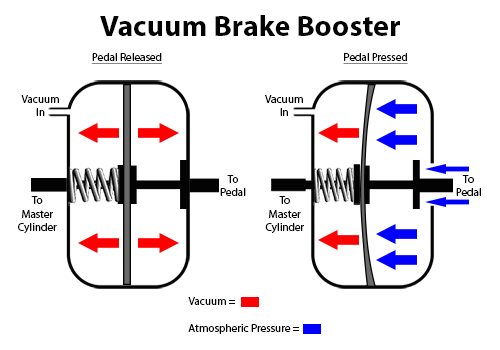What is a brake booster?
A brake booster increases the force applied to the brake pedal, amplifying the hydraulic pressure delivered to the master cylinder.
This allows for more effective braking, making it an essential safety feature for any vehicle.
This technology, also known as "power brakes," utilizes vacuum pressure to reduce the force required to stop the car. However, like any other technology, brake boosters may experience a malfunction.
Although infrequent, knowing the signs indicating a faulty power brake booster is essential.
It is pertinent to note that brake boosters are present in almost all cars equipped with hydraulic brakes, while vehicles using pressurized air systems as their primary brake circuits do not require them.
Key Takeaways:
|
What is the role of a Brake Booster?
An automobile equipped with disc brakes relies heavily on the brake booster to stop. Brake boosters, which are located under the hood, provide additional braking force and aid in stopping your vehicle. Without it, stopping distances would increase substantially, increasing the likelihood of a collision between the driver and passengers during an emergency stop.
Source: Summit Racing
The diaphragm (the vertical piece) pulls on the rod as it transfers the force exerted to the brake pedal, increasing the force against the master cylinder piston. The combined force simply and swiftly slows the automobile. The valve closes when the brake pedal is released, and the system restores to equilibrium.
By adding force to the master cylinders, which dispenses the pressurized fluid that triggers the brakes, brake boosters lessen the effort required to apply the brakes. Aside from the damage to your car, it is extremely dangerous for you and others on the road to drive with a faulty brake booster.
What are the signs that your brake booster needs replacement?
If you notice any of the following poor brake booster symptoms, it's time to replace them.
Brake Pedal Resistance
A faulty brake booster makes pressing the brake pedal much more difficult. The booster's ability to apply additional force against the master cylinder piston diminishes as it fails. The vehicle's driver is now responsible for all braking power, which is challenging.
The brake pedal will feel like it has lost its resistance and become much harder to push. The vehicle may also shudder when braking, especially when going downhill.
Braking Distance Increased
When a brake booster fails gradually, the performance loss is more difficult to detect. If the brake pads and rotors appear to be in decent condition, the brake booster could be to blame.
Over time, the brake booster will lose its ability to generate enough vacuum to apply the brakes effectively. This causes an increase in the distance needed to stop your vehicle. The problem may become apparent when slowing down during high-speed driving or while braking on inclines.
Position of the Brake Pedal
You may notice that the brake pedal "travels" less than typical when the brakes are engaged, in addition to the harsher resistance of the brake pedal under pressure. The pedal return may be slower than usual if the booster chambers are out of balance.
Engine Malfunction
The brake booster can suck air into the induction system through a hole in the diaphragm which can affect the fuel mix in the engine since the booster is connected to the primary air intake. In newer, fuel-injected vehicles, the computer compensates for the discrepancy. However, brake booster failure in older cars can cause the engine to run lean due to inadequate gasoline in the cylinder.
Frequently Asked Questions on Brake Boosters
Can I test the brake booster on my own?
Yes, you can check if your vacuum brake booster operates with a simple test. Here is how:
Pump the brake pedal six times with the engine turned off, clearing any vacuum built up in the booster. Turn on your vehicle while applying light pressure to the brake pedal. The brake booster is fine if the pedal gives slightly under your foot and then hardens up. The brake booster is likely to fail if the pedal stiffens and becomes difficult to depress.
How urgent is it to get a brake booster replacement done?
A faulty brake booster must be replaced as soon as possible. Furthermore, driving with a brake problem is never a good idea, so instead of going to the repair, have one come to you.
Is it possible to drive with a faulty brake booster?
Even if there is no power assist, you will be able to drive with a faulty brake booster since there will still be a mechanical connection within the booster via the booster rod. Your master cylinder will still pump brake fluid via the brake lines to cause the brakes to engage if everything else is fine.
Is it safe to drive without a brake booster?
No, it is not safe because in order to stop the car, you'd have to apply a lot more force. To slow down even a little without a power brake booster, you'd have to depress the brake pedal fairly hard.
Is a bad brake booster an isolated problem?
Sometimes, brake booster issues are a problem that can be easily fixed with a repair. It could also be a problem with the valve or the booster vacuum hose. The hose or valve would most likely need to be replaced.
However, if the brake booster problem has been present for some time, other brake system components may be damaged. Your brake pads may need replacement or a faulty brake booster may have caused damage to your tires or other car parts.
Can I carry out a brake booster replacement on my own?
It is not recommended to attempt brake booster replacement on your own if you are not a qualified mechanic. You need to secure the booster to the firewall bracket, connect it to the master cylinder, deal with the vacuum line and intake manifold, and ensure every bolt and hose clamp is secure.
You cannot afford to fix the braking system yourself to save money. There's no scope for error, and even a minor mistake can cost you far more than you're willing to pay. Instead, take your vehicle to a trusted mechanic.
What would be the cost of a brake booster replacement?
A brake booster replacement could cost anything from $325 to $1250. Labor prices typically vary from $100 to $200, and car parts might cost anywhere from $100 to $900 (or more). The cost is mainly determined by the brand and model of your car, as well as the labor rates of the technician.
You can save a lot of complications and problems now that you know how to spot the signs of a faulty brake booster.
If you have replaced your brake booster, but your new brake booster is not working, you should seek professional assistance from NuBrakes.
Our technicians will come to your home or office for brakes, oil change, maintenance, and more.
References
- https://help.summitracing.com/app/answers/detail/a_id/5293/~/what-is-a-brake-booster.
- https://cartreatments.com/bad-brake-booster-symptoms-and-replacement-cost/
- https://www.familyhandyman.com/article/top-bad-brake-booster-symptoms/
- https://mechanicbase.com/brakes/bad-brake-booster-symptoms/


